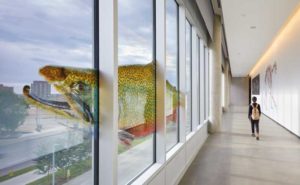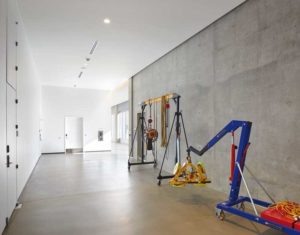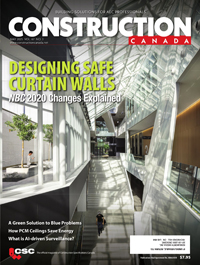Concrete chronicles: Achieving floor flatness and levelness
 “Fault” is the word commonly used during construction when there is a perceived defect in the work, as stated above, the progress of change to the FF/FL is a natural process that needs to be accounted for within the project documents.
“Fault” is the word commonly used during construction when there is a perceived defect in the work, as stated above, the progress of change to the FF/FL is a natural process that needs to be accounted for within the project documents.- As indicated above, deviation from the measured tolerance on day three until the floor covering is installed eight, nine, or 12 or months later is a natural part of aging concrete, meaning that pointing to an at “fault” trade is inappropriate and unjustifiable unless there were specific defects identified during the ASTM E 1155 measurements.
- “Correction” is a better word and can be used to describe the grinding and filling operations typically required to address requirements for straight edge tolerances required by floor covering manufacturers in the form of a cash allowance, as recommended by the American Concrete Institute (ACI) and American Society of Concrete Contractors (ASCC) for more than 20 years.
- Correction of concrete surfaces form a part of Division 03 scope of deliverables and are described by most concrete finishing training and apprenticeship programs, and do not form a part of the traditional deliverables forming Division 09.
- Division 09 is only responsible for minimal skim coating, average roughness (Ra), or concrete surface profile (CSP) range, and light abrasion to create a surface that will be compatible with floor covering adhesives and to minimize telegraphing of surface irregularities through resilient materials that will show on the final surface finish.
-

In the back-of-house areas of the Royal Alberta Museum (RAM), a low-maintenance finish resistant to dusting was achieved by employing polished concrete. Photos courtesy National Floor Covering Association of Canada (NFCA). Most corrections typically require minimal correction, usually in the range of a few millimetres or 1.5 mm (0.0625 in.), which can be achieved by bump grinding or planning, and minimal filling. Finishing aids incorporating colloidal silica or nano modified cements (NMC) can help fill voids and surface imperfections during the refinishing process without the potential for bond inhibiting side effects often from silicate or membrane forming curing compounds or surface treatments.
- Floors at the higher range of deviation may require installation of self-levelling underlayments or other topping materials.
The National Floor Covering Association of Canada (NFCA) developed a best practice for making straight edge measurements.1 NFCA is presenting their approach to the industry in hopes that a uniform approach to making measurements that respect the differences between concrete and floor covering trades will be adopted as standard practice in the coming months.







